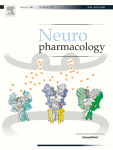|
Autores/as
Duart-Castells, L.; Nadal-Gratacós, N. ; Muralter, M.; Puster, B.; Berzosa, X. ; Muralter, M.; Puster, B.; Berzosa, X. ; Estrada-Tejedor, R. ; Estrada-Tejedor, R. ; Niello, M.; Bhat, S.; Pubill, D.; Camarasa, J.; Sitte, H. H.; Escubedo, E.; López-Arnau, R. ; Niello, M.; Bhat, S.; Pubill, D.; Camarasa, J.; Sitte, H. H.; Escubedo, E.; López-Arnau, R.
|
Abstract
The emergence of new synthetic cathinones continues to be a matter of public health concern. In fact, they are quickly replaced by new structurally related alternatives. The main goal of the present study was to characterize the pharmacological profile, the psychostimulant and rewarding properties of novel cathinones (pentedrone, N-ethyl-pentedrone, α-PVP, N,N-diethyl-pentedrone and α-PpVP) which only differs in their amino terminal substitution. Rat synaptosomes were used for [3H]dopamine uptake experiments. HEK293 transfected cells (hDAT, hSERT, hOCT; human dopamine, serotonin and organic cation transporter) were also used for [3H]monoamine uptake and transporter binding assays. Molecular docking was used to investigate the effect of the amino substitutions on the biological activity. Hyperlocomotion and conditioned place preference paradigm were used in order to study the psychostimulant and rewarding effects in mice. All compounds tested are potent inhibitors of DAT with very low affinity for SERT, hOCT-2 and -3, and their potency for inhibiting DAT increased when the amino-substituent expanded from a methyl to either an ethyl-, a pyrrolidine- or a piperidine-ring. Regarding the in vivo results, all the compounds induced an increase in locomotor activity and possess rewarding properties. Results also showed a significant correlation between predicted binding affinities by molecular docking and affinity constants (Ki) for hDAT as well as the cLogP of their amino-substituent with their hDAT/hSERT ratios. Our study demonstrates the role of the amino-substituent in the pharmacological profile of novel synthetic cathinones as well as their potency inhibiting DA uptake and ability to induce psychostimulant and rewarding effects in mice.
|

WoS
Scopus
Altmetrics
 
|
